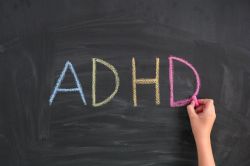The brain is not designed for constant performance. It is tuned to rhythm - of light and darkness, rest and activity. When these rhythms are restored, so is our inner balance, health, and cognitive potential. At Light Brains, we believe that working with circadian rhythms and light is the key to a calmer, healthier, and more focused life - especially for neuro-sensitive individuals.
The Brain Is Not a Machine: It’s Governed by the Rhythm of Light and Darkness
Our body - and especially the brain - functions in harmony with natural rhythms. The circadian rhythm is a biological 24-hour cycle that regulates sleep, wakefulness, body temperature, hormone levels, and brain activity. This rhythm is controlled by the suprachiasmatic nucleus (SCN) in the hypothalamus, which receives light information from the eyes and adjusts the body’s internal clock accordingly.
Modern life, however, disrupts these rhythms. Artificial lighting, night work, long hours in front of screens, and irregular sleep patterns confuse the brain - leading to problems with sleep, mood, cognitive performance, and overall nervous system balance.
Light as the Main Synchronizer of Brain Rhytms
The most important time cue for the circadian system is light, particularly the blue spectrum (around 460-480 nm), which activates specific photoreceptors in the retina called melanopsin-containing ganglion cells. These cells send signals to the SCN, which then regulates:
- Melatonin production (the sleep hormone),
- Cortisol (the wakefulness hormone),
- Body temperature and metabolism,
- Brain wave activity throughout the day.
Chronobiology and Cognitive Function
Chronobiology studies how internal biological rhythms affect our health and behavior. From the perspective of the brain, it’s important to understand that:
- Cognitive performance (memory, focus) fluctuates during the day,
- Creativity and intuition tend to peak when cortisol levels are lower,
- A consistent sleep-wake rhythm supports neuroplasticity,
- Disturbed rhythms (for instance, due to shift work) increase the risk of anxiety, depression, and neurodegeneration.
Light Therapy: Helping the Brain Find Its Rhythm
Light therapy involves exposure to bright light in the morning or controlled use of red/infrared light during the day. Its scientifically proven benefits include:
- Better sleep: Morning light exposure helps synchronize melatonin and shorten sleep onset time.
- Improved mood: Used as an adjunct treatment for seasonal affective disorder (SAD) and depression.
- More energy: Optimizes cortisol production and enhances alertness.
- Enhanced brain function: Improves memory and reaction time through harmonization of brain rhythms.
Chronorhytmic Care at Light Brains
At Light Brains, we work with light as a therapeutic medium. Our approaches include:
- Morning light activation - guided illumination to set the circadian axis,
- Evening light down-regulation - red or amber spectrum without blue light to induce relaxation,
- Dynamic lighting - adaptive light sequences synchronized with time of day and emotional state,
- Integration with other modalities - combining light with aromatherapy, sound, and vibration for deeper nervous system regulation.
Why This Matters Especially for the Neurodivergent
Neurodivergent individuals often experience sleep issues, overstimulation, irregular routines, and light sensitivity. Yet they respond particularly well to stable structure, predictability, and gentle sensory input.
The right type and timing of light can:
- Stabilize mood and biological processes,
- Reduce nervous system overload,
- Improve sleep quality and daytime alertness,
- Enhance focus and emotional stability.
References & Further Reading
- Czeisler, C. A., & Gooley, J. J. (2007). Sleep and circadian rhythms in humans. Cold Spring Harbor Symposia on Quantitative Biology, 72, 579-597. → A comprehensive overview of how light and internal clocks affect sleep, wakefulness, and cognition.
- Foster, R. G., & Kreitzman, L. (2017). Circadian Rhythms: A Very Short Introduction. Oxford University Press. → An accessible introduction to biological rhythms for those interested in health and sleep.
- LeGates, T. A., Fernandez, D. C., & Hattar, S. (2014). Light as a central modulator of circadian rhythms, sleep and affect. Nature Reviews Neuroscience, 15(7), 443-454. → A key paper explaining how light influences circadian systems, mood, and sleep architecture.
- Wright, K. P., et al. (2013). Entrainment of the human circadian clock to the natural light-dark cycle. Current Biology, 23(16), 1554-1558. → Demonstrates how consistent exposure to natural light recalibrates internal clocks and improves sleep.
- Smarr, B. L., & Schirmer, A. E. (2018). 3.5 billion years of circadian time. Cell, 173(5), 1161-1164. → An evolutionary perspective on biological rhythms, highlighting their fundamental role across all life forms.





